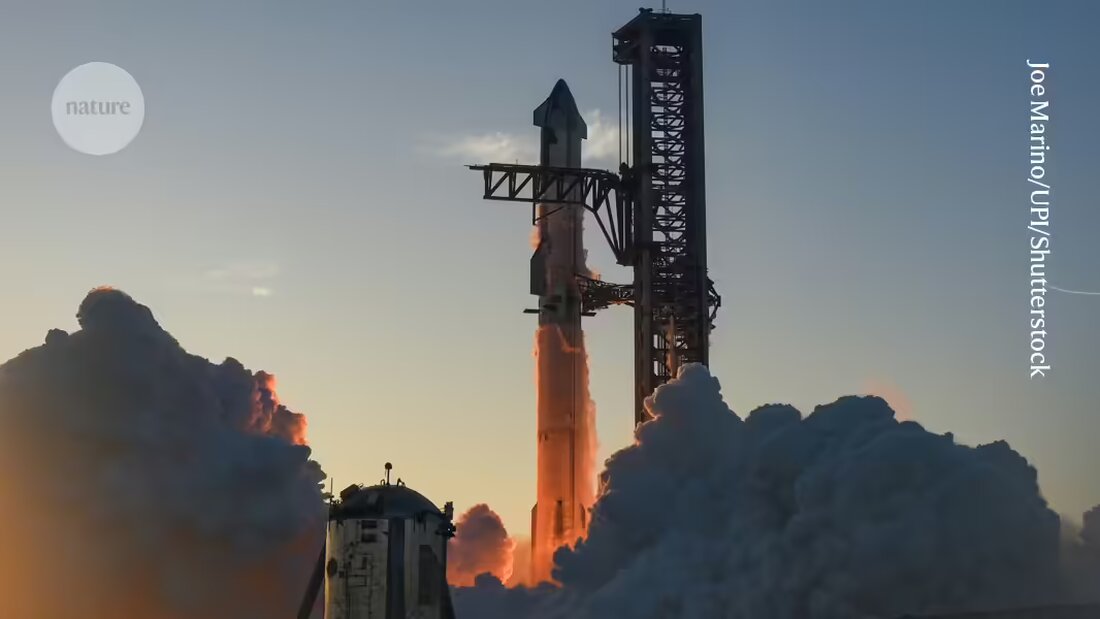The huge explosions that hit the Starship mega rocket t destroyed by SpaceX last year also left one of the largest 'holes' ever discovered in the ionosphere, a thin layer of air in the upper atmosphere. A research result showed that the hole extended for thousands of kilometers and lasted for almost an hour 1.
Yury Yasyukevich, co-author of the study and an atmospheric physicist at the Institute of Solar-Terrestrial Physics in Irkutsk, Russia, says the magnitude of the disturbance surprised his team: "It means we don't understand processes in the atmosphere." He adds that such phenomena have future implications autonomous vehicles may have that require precise satellite navigation. The results were announced on August 26thGeophysical Research Letterspublished.
Record rocket
On November 18 last year, SpaceX launched its Starship rocket - the largest and most powerful rocket ever built - from a launch site in Boca Chica, Texas. Starship's first stage is designed to return safely to the surface and be reused, but it exploded shortly after separating from the upper stage, about 90 kilometers (55 miles) over the Gulf of Mexico. Minutes later, the self-destruct mechanism on the upper stage triggered a second explosion at an altitude of about 150 kilometers.
Yasyukevich and his collaborators were curious about how such massive explosions might affect the ionosphere, a layer of the atmosphere that extends from about 50 to 1,000 kilometers above sea level, where radiation from the sun can strip some air molecules of their electrons. The result is that a small percentage of the ionosphere's mass is made up of electrons and positively charged ions, while the rest of the air molecules remain neutral. The exact ratio of ionized to neutral molecules varies depending on factors such as altitude and latitude.
This ratio influences the speed at which radio waves emitted by global navigation satellites propagate in the ionosphere. Changes in the ratio have different effects on different radio frequencies. This allows researchers to measure the ionization rate in real time by comparing the speeds of radio waves at two different frequencies, explains Yasyukevich.
This data has been used for decades to show how events like earthquake to underground nuclear weapons tests affect the ionosphere. These natural and man-made disturbances can temporarily neutralize the effects of solar radiation by recombining electrons and ions into neutral molecules.
Neutralization of the air
The team examined publicly available data from more than 2,500 ground stations in North America and the Caribbean that receive satellite navigation signals. They found that the Starship explosions produced shock waves traveling faster than the speed of sound, turning the ionosphere into a neutral atmosphere - a "hole" - for nearly an hour across a region from the Yucatán Peninsula in Mexico to the southeastern United States. Rocket exhaust can trigger chemical reactions that create temporary holes in the ionosphere even in the absence of an explosion, but in this case the shock waves themselves had by far the greater effect, Yasyukevich explains.
“I was impressed by this case study,” says Kosuke Heki, a geophysicist at Hokkaido University in Sapporo, Japan, who served as an open reviewer for the paper. However, he believes the chemical effects of the great fire were the primary cause of the hole.
The hole wasn't quite as big as the one through that Volcano eruption in Tonga in early 2022 caused, says Heki, but it exceeded the one caused by the historic meteorite impact near Chelyabinsk, Russia, was caused in 2013 – the largest in a century.
Ionospheric disturbances can affect not only satellite navigation, but also communications Radio astronomy affect. As launch frequencies increase, these effects could become more of a problem.

 Suche
Suche
 Mein Konto
Mein Konto

